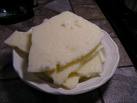Kickstart your soapy venture: 3 easy, made-for-you tallow soap recipes
Making soap with tallow is easier if you have recipes in hand. Not all soap is made with tallow and so you may not be able to find recipes around. This article will feature a few tallow soap recipes to help you kickstart your soap making venture at home. But before you get your hands on animal fat like beef tallow, you need to know a few nuances on how to work with fat.
Tallow nuances: Fat or beef suet, as such, is not pure. You need to render it to tallow to free it from impurities. If you do not render properly, you may end up making a soap that carries an ugly or stinking smell (this maybe because of a rancid fat/tallow). Sometimes overuse of fat and little use of lye can delay the saponification process or cause unusual soap formation. Avoid all these by using the right amount of ingredients. Above all, ensure that your tallow is stored properly before you make it into soap. Unkempt tallow means smelly, useless soaps that do an awkward cleaning job.

Below are a few tallow soap recipes you can use in your soap making business at home:
1. Tallow Resin soap: Resin can be used together with tallow in soap making. While some prefer to melt the resin and tallow before the saponification, it is better to make a soap of each (separately) and then, mix them and boil for half an hour and strain through a sieve. About 15% of resin can be mixed with tallow. Overuse of resin results in inferior quality soap formation. To make resin soap, you may need the following: 12 gallons of caustic soda, 100 pounds of pulverized resin and water and tallow.
Boil caustic soda in a kettle and add the resin (15 pounds) at a time to it. Heat to the boiling point while constantly stirring the mixture. In two hours time, you can see the saponification happening. The lightest resin is the best for soap.
2. Tallow Coconut Oil soap: A mixture of equal parts of coconut oil and tallow will make a fine filled soap. However, coconut oil should not be mixed in large proportions as it can spoil the fat and result in improper saponification. In a filled soap, excess water is separated from the soapy mixture (cold soap) by means of adding salt. This tallow coconut oil can be made hard by following the same procedure. For this, you may need 100 pounds of coconut oil (equal amount of tallow) and 100 pounds of caustic soda lye. Boil the mixture at 27 degree Celsius and stir thoroughly for 2 hours or so. The paste will thicken and a white, half-solid mass will be formed. Reduce the heat and transfer it to molds.
3. Tallow Palm Oil soap: Palm oil cannot be used in soap all on its own. It is not fatty enough to induce saponification. Hence, it should be employed with other fats like tallow. When you mix palm oil with tallow, saponify both separately and then, mix them later (just like what you did with tallow coconut oil soap). Tallow palm oil soap works best with the following proportions of ingredients: 30 pounds of palm oil with 20 pounds of tallow and 2 pounds of resin or 30 pounds of palm oil with 50 pounds of tallow and 20 pounds of resin.








